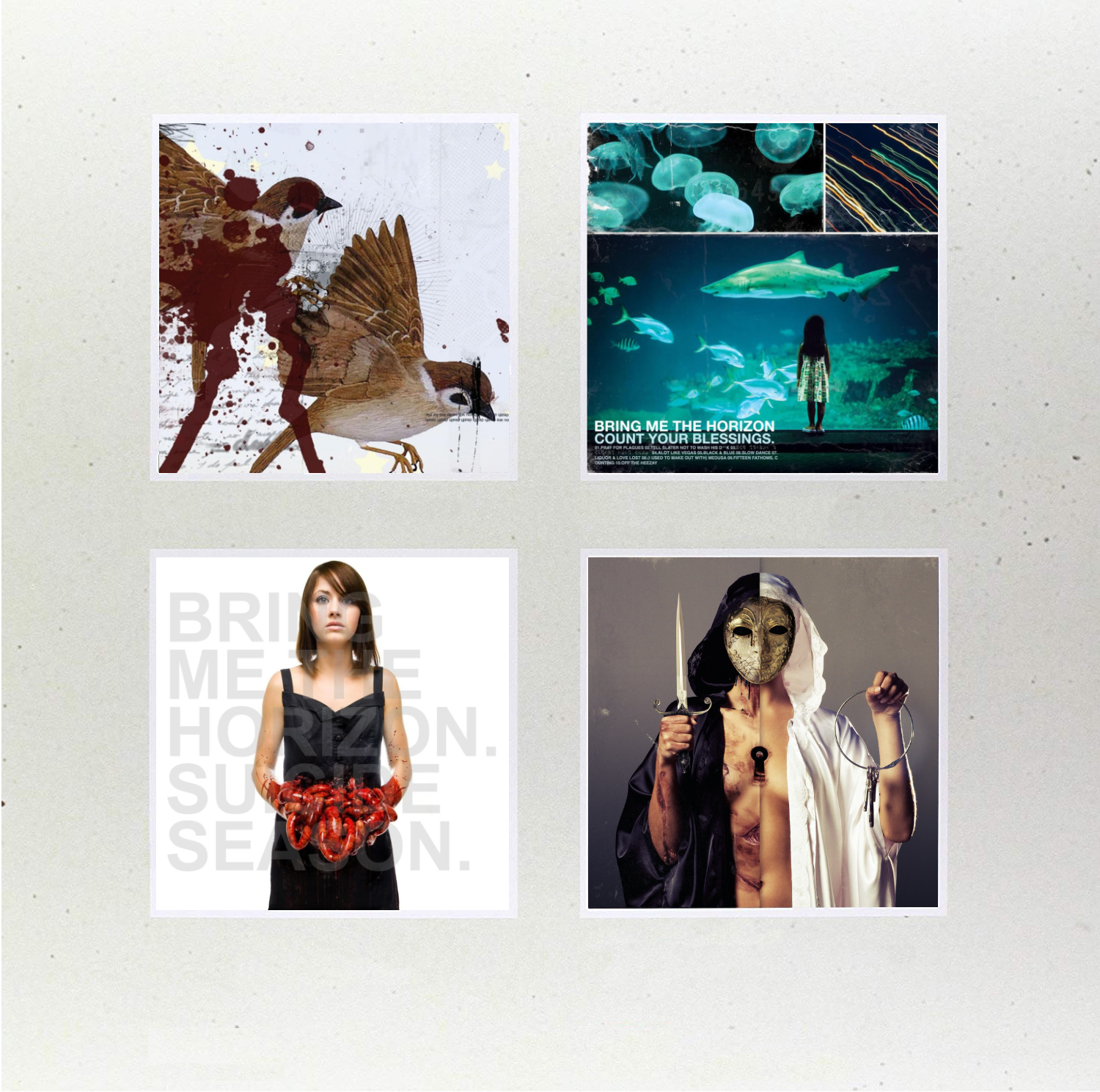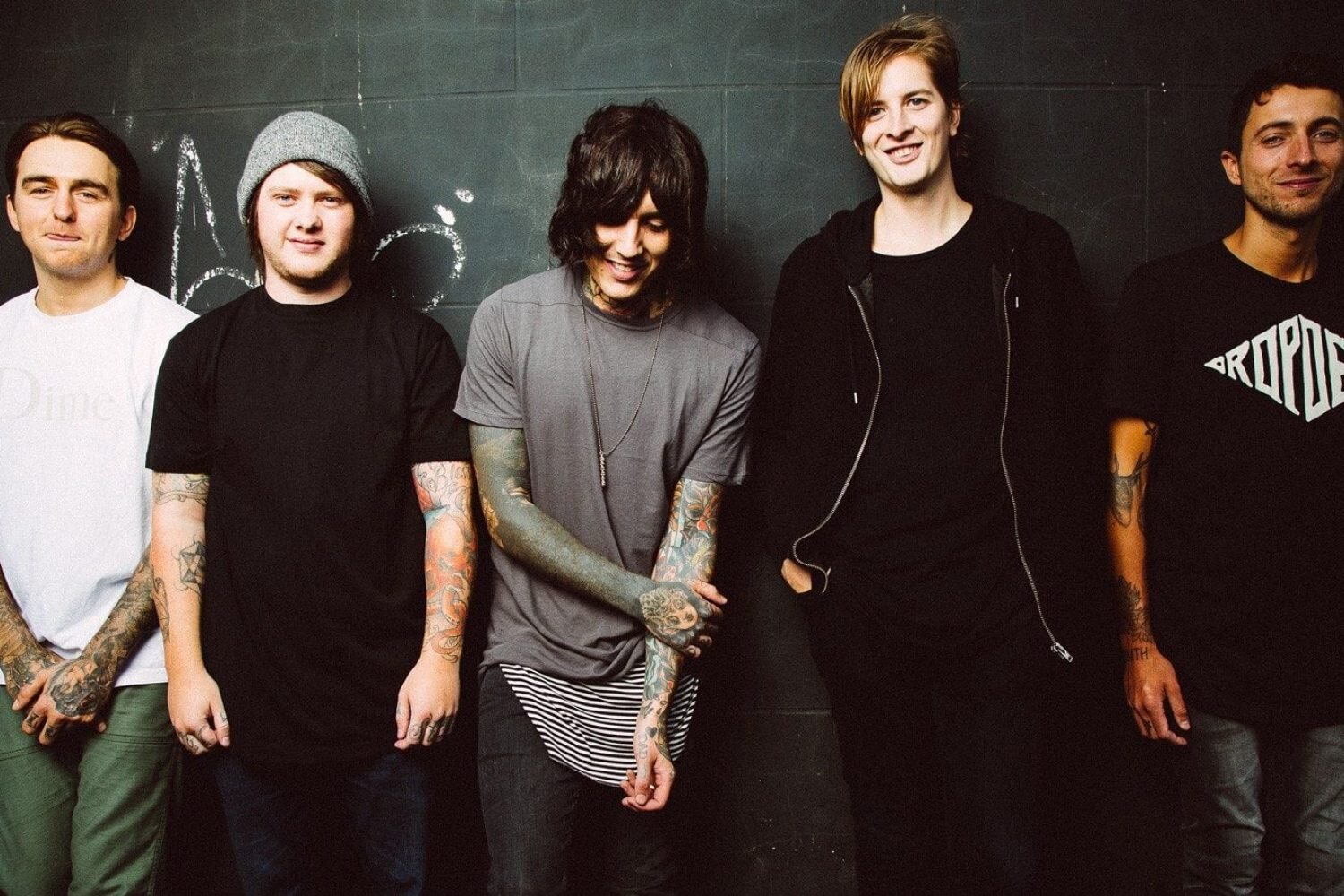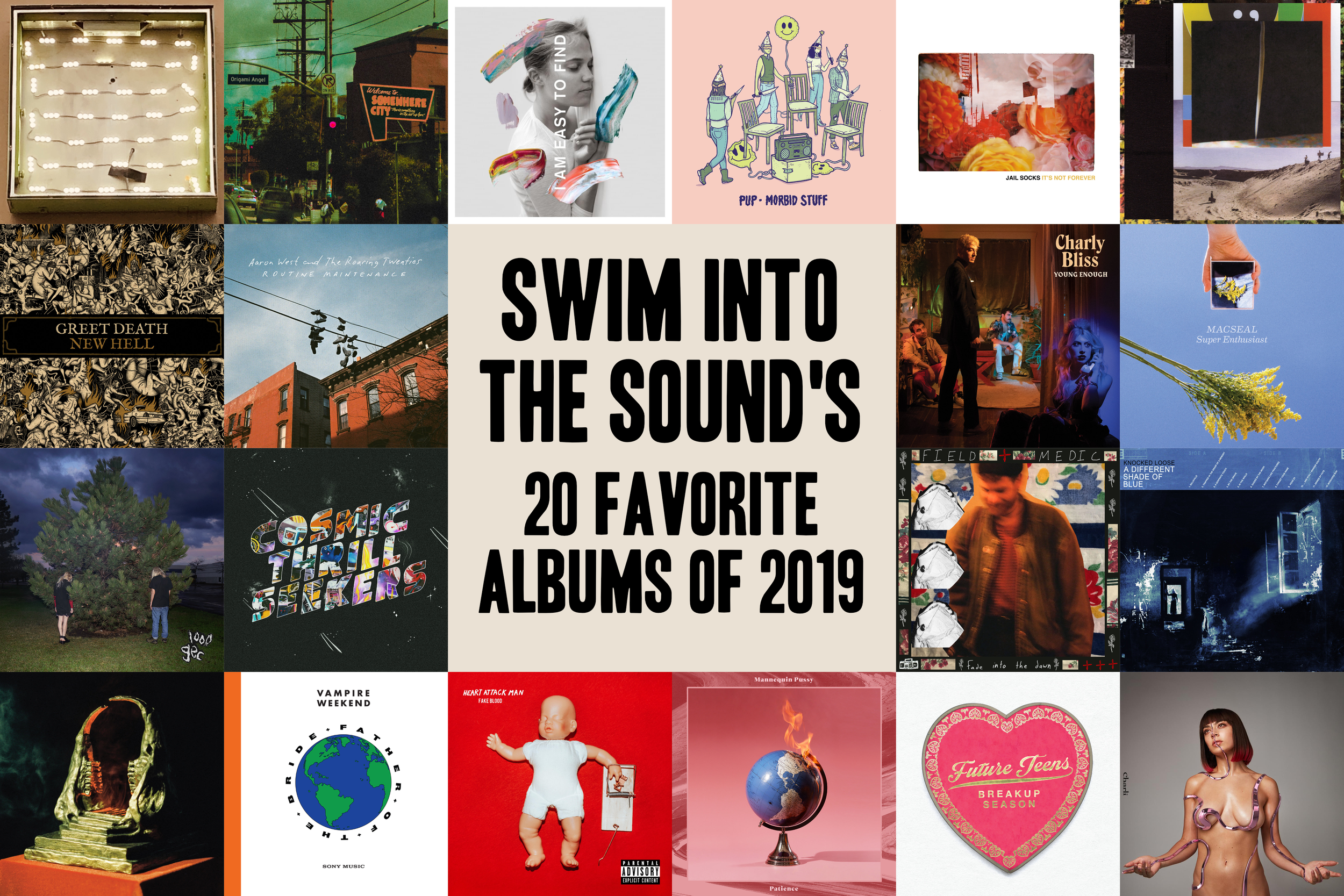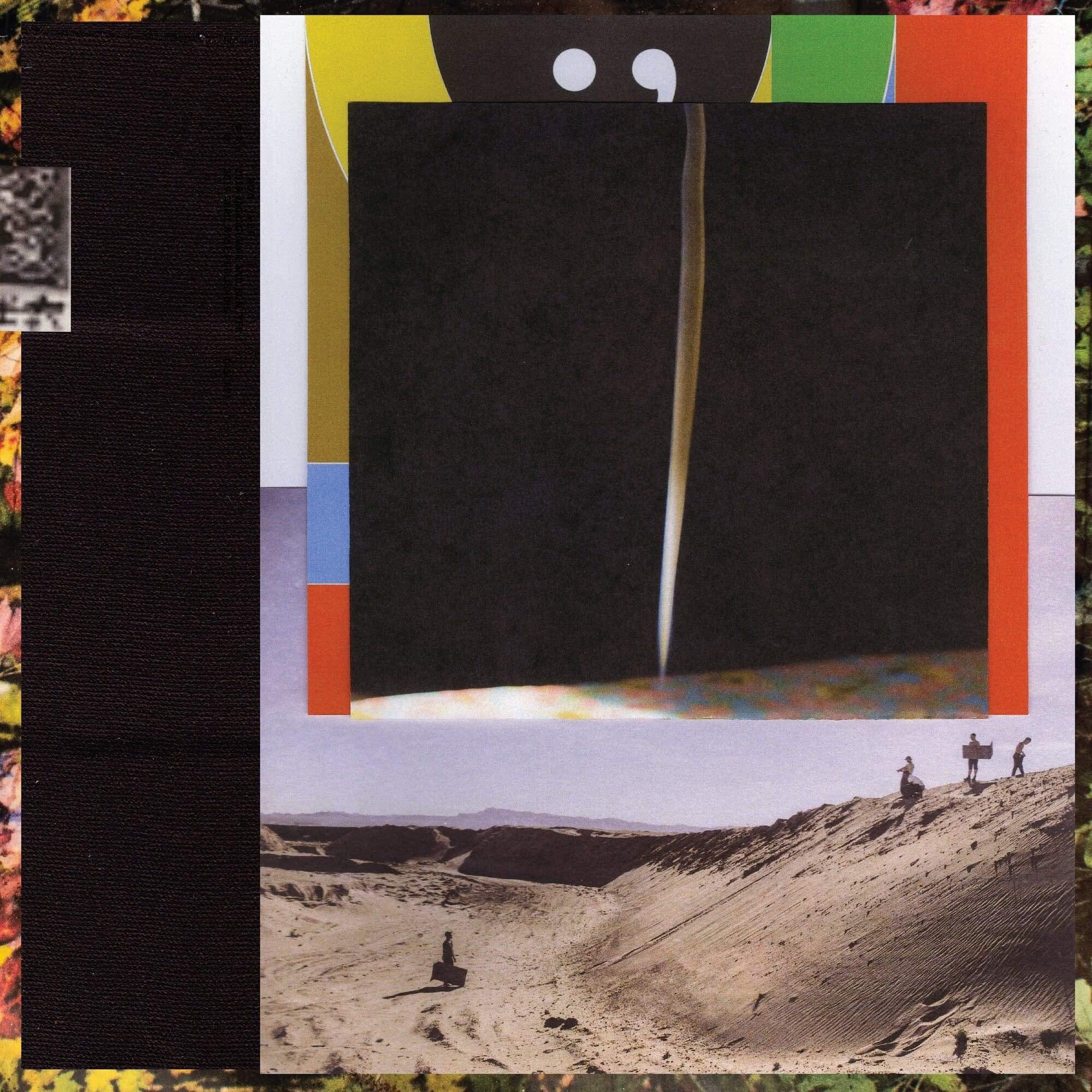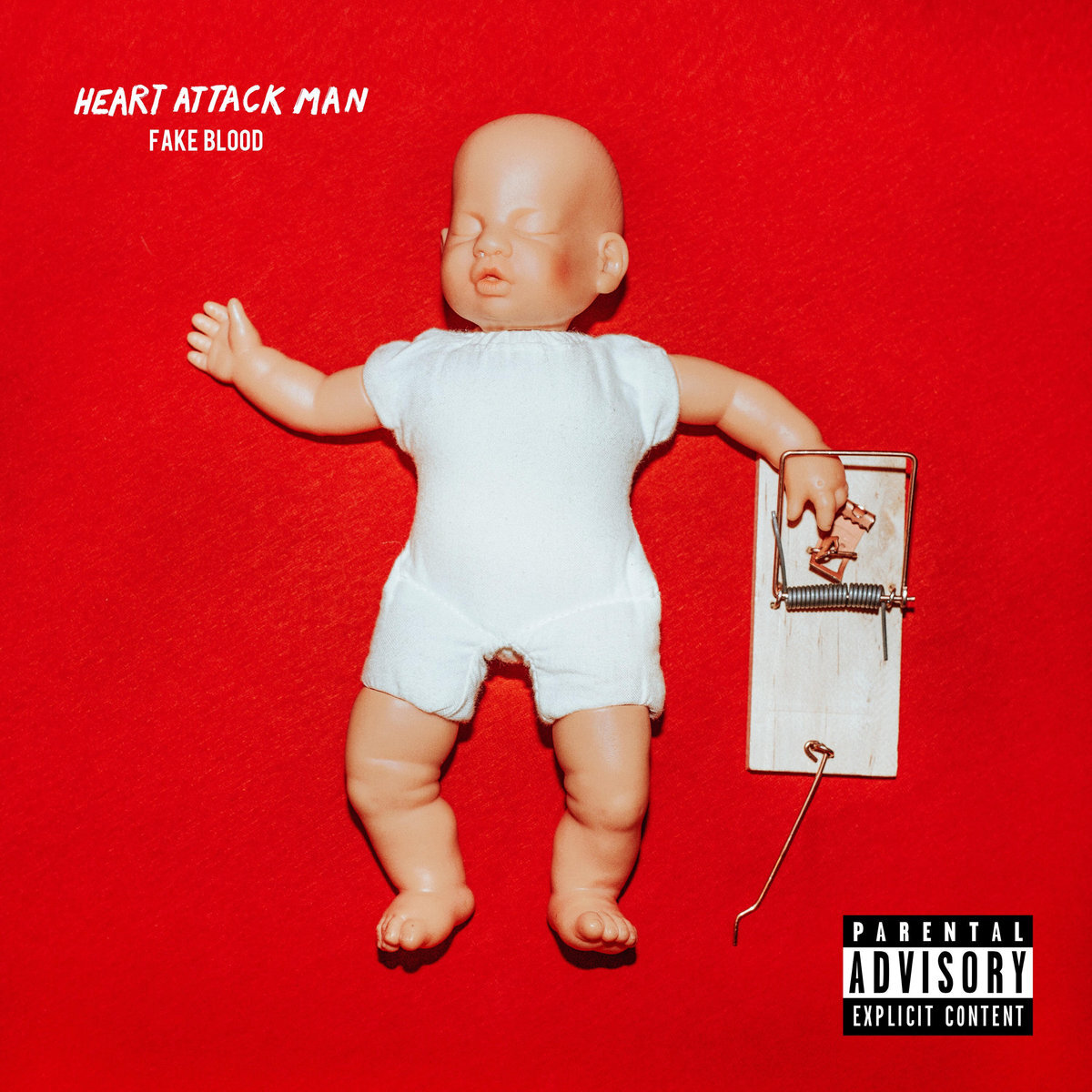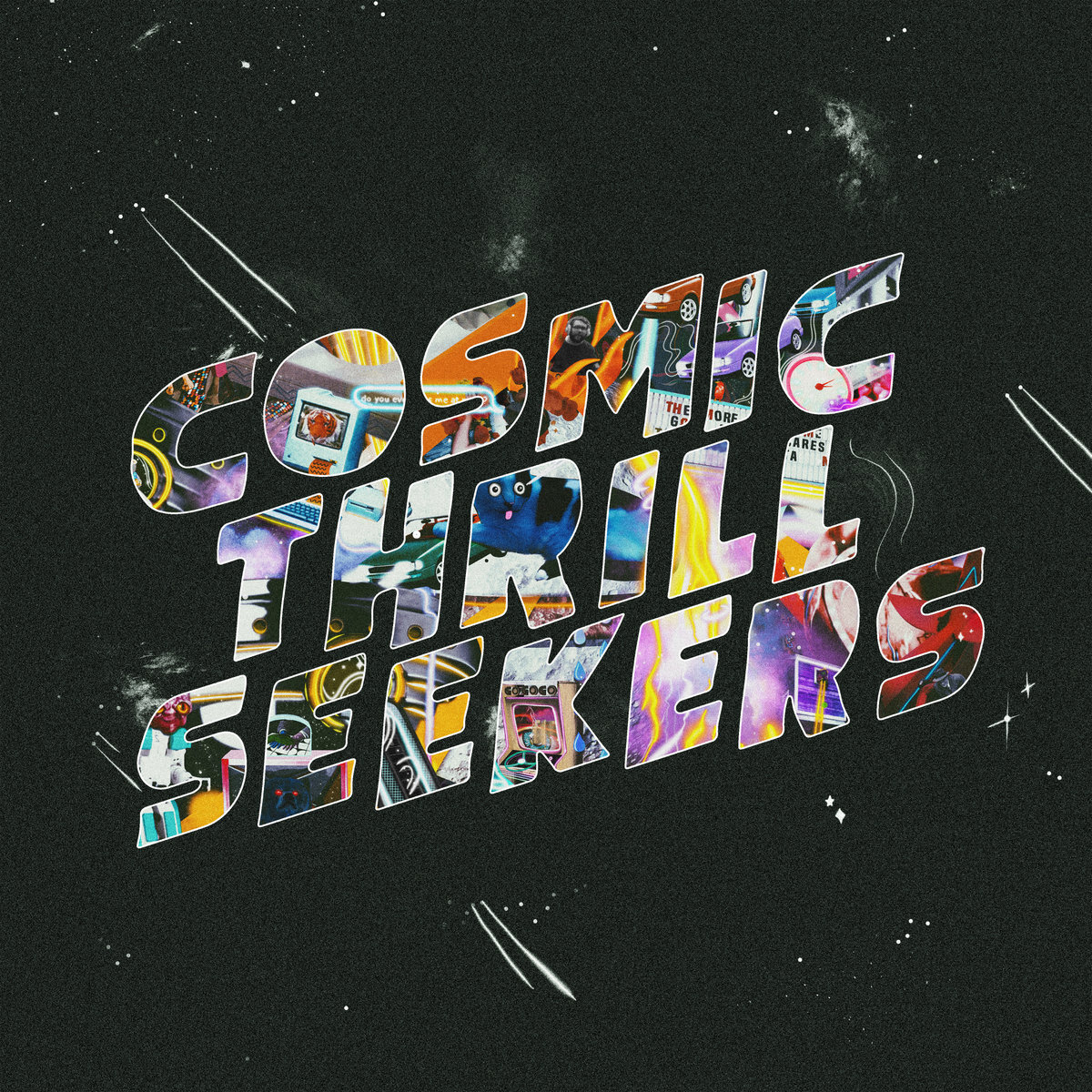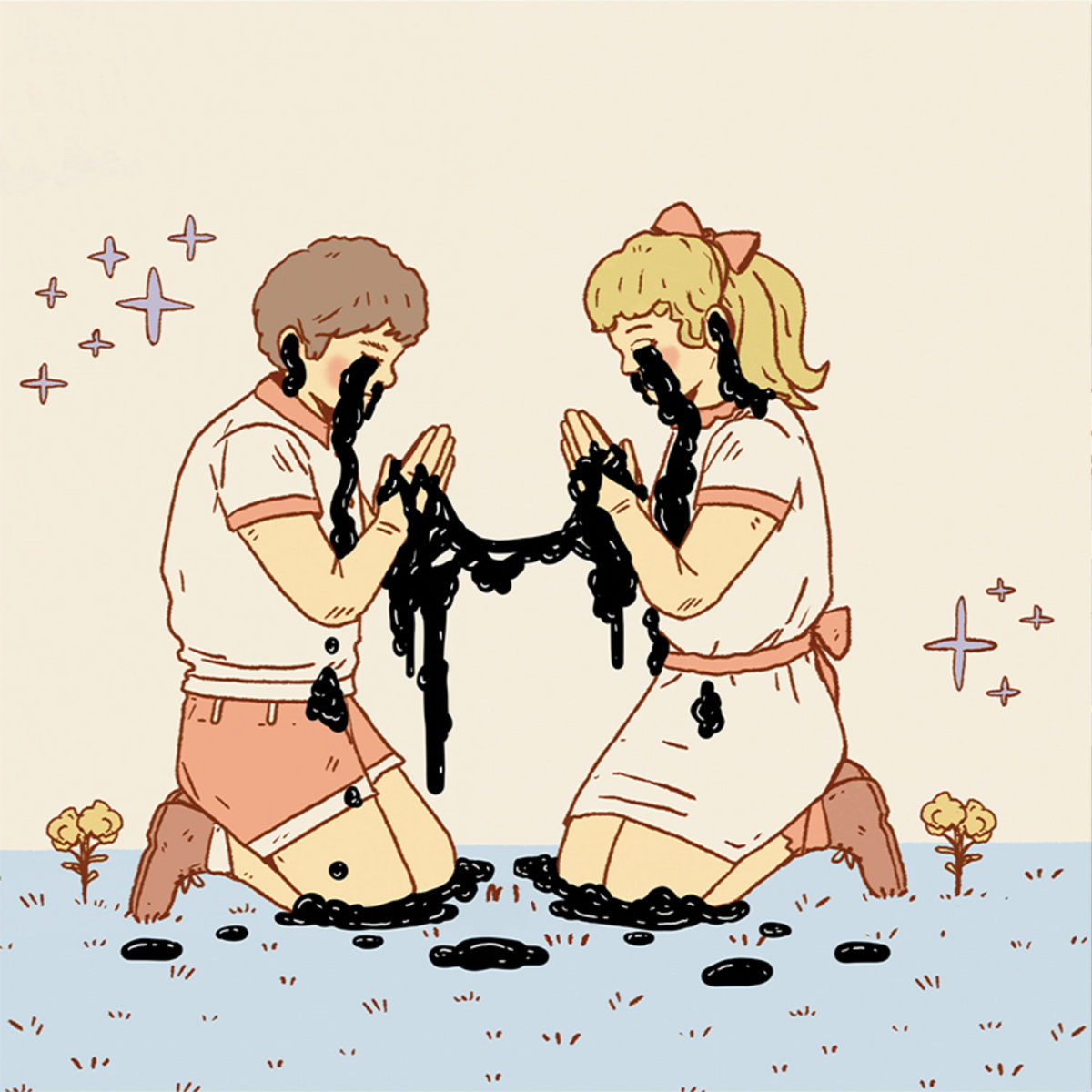And Then We All Bought Yachts: A Minus The Bear Discography Ranking
/For a band whose name is based on a joke about a blowjob, Minus the Bear have played a surprisingly vital role in my musical development. An alternative rock band hailing from the rainy city of Seattle, Minus The Bear made a name for themselves with a unique combination of catchy indie rock, mathy guitar tapping, and odd time signatures. This resulted in a sound that was at once accessible, dancy, hyper-technical, and entirely their own. Their lyrics are evocative and poetic, often centered around tales of love and life in the Pacific Northwest, along with iconic sing-along choruses that would become lodged in your prefrontal cortex for days on end. The band officially called it quits at the end of 2018, but to this day, they remain one of the most important and influential acts of my life.
Minus The Bear’s Discography is somewhat daunting, stretching from the early 2000s to their final release at the tail end of 2018. They underwent very few lineup changes, but each release brought a new tone that saw the band refreshing their sound like the changing of the seasons. During their time together, Minus The Bear produced six studio albums, three EPs, two acoustic releases, one remix album, one B-sides collection, and a whole host of singles. In other words, there’s a lot of music, and somehow all of it’s worth digging into.
I first discovered Minus The Bear when a friend forced his headphones over my ears sometime in high school and played “Pachuca Sunrise” on his lime green iPod Nano. From the second that I heard those first dreamy notes, I knew that this band would become my new obsession. Placed in the same category as Portugal. The Man (who I also did a discography ranking for), these bands became the face of musical discovery for me in high school. They represented something new, something fresh, and something that was unlike anything I’d ever heard before. I downloaded the band’s discography as of 2008-ish and began to slowly immerse myself in the world of Minus The Bear.
In turn, I paid it forward and got some of my friends into the band. One of my closest childhood friends and I became MTB partners in crime, attending some half-dozen concerts together throughout high school before going our separate ways in college. To me, these songs evoke warm memories of the last carefree days of high school. They remind me of long drives on summer nights with the windows down and rainy Portland springs, begrudgingly juggling school with my teenage job at a grocery store. It’s not an understatement to say that this band soundtracked some of the most important moments, and feelings, of my life.
It’s worth noting that while this is a “ranking” of Minus The Bear’s discography, even the lowest album on this list is still a fantastic record that’s worth listening to. I believe that each of Minus The Bear’s albums shine on their own merits, the big difference is that some of these albums arrived in my life exactly when I needed them, while others haven’t had the fortune to coincide with major life events. In other words, there are no bad Minus The Bear albums: this list merely goes from “good” to “great.”
It’s also worth noting that for the purposes of this ranking, I will be disregarding the band’s remix album, B-sides collection, and some of the smaller promo singles like YAR and Hold Me Down. This list will focus on the group’s core studio albums and EPs: a grand total of eleven entries. So welcome to the world of Minus The Bear. Pour a glass of red wine, and prepare to journey into one of the best discographies of indie rock.
11 - Voids (2017)
Part of me feels bad putting the band’s last proper studio album lowest on this ranking, but Voids has had the least amount of time to make an impact on me, especially in comparison to some of the later albums on this list. That said, Voids is still a fantastic record that represented something of a return to form for the band as they circled back to the more mathy and intimate style of their early releases. Behind the scenes, Voids is the only album to feature drummer Kiefer Matthias who joined the band two years earlier replacing founding member Erin Tate. This record also marked the return of the band to their original label, Suicide Squeeze, for the first time since 2007’s Planet of Ice. So with some old and some new, Voids feels like a career-spanning retrospective that also acts as a truly fantastic bookend.
Voids sees MTB at their most wistful and diverse, synthesizing every different type of song they’ve made across their 17-year career into one LP. Songs like “Invisible” and “Last Kiss” are poppy radio grabs that are primed for bouncy indie dance parties and sunny top-down singalongs. Conversely, tracks like “What About The Boat?” harken back to the band’s debut, eschewing radio-ready choruses for more technical instrumentation, subdued vocals, and self-destructive lovelorn lyricism. Meanwhile, “Silver” sounds like a mid-career OMNI-cut, and “Lighthouse” builds to a glitchy, psychedelic guitar solo that would have fit in perfectly on Planet of Ice. With this record, the group pulled out all the stops and created an album that felt designed to please every type of MTB fan regardless of what their favorite era of the band was.
10 - Fair Enough (2018)
Minus The Bear’s final release, Fair Enough, was an apt farewell. An EP comprised of three Voids leftovers and one remix, the band’s last formal release was a bite-sized send-off that they put out right before embarking on their farewell tour at the end of 2018. Fair Enough simultaneously acted as a reminder of what made the band great and also served as a bittersweet love letter to fans. Everyone went into this EP knowing it was the band’s final work, and that made it all the more difficult to say goodbye.
The opening track “Fair Enough” begins somberly with lead singer Jake Snider touching on all of his favorite topics; women, alcohol, and regret. This leads to a masterful build as synthesizers, bass, and guitar swirl together over a drumroll. “Viaduct” is a hard-driving anthemic cut, and “Dinosaur” is a groovy and carefully-constructed piece centered around one of the band’s signature guitar-tapped lines. I will say, while Sombear’s remix of “Invisible” is serviceable, the decision to close the band’s entire career out on a remix is a perplexing one. It ends up feeling more like the reprised music that plays over the end credits of a movie than a thoughtful message to fans after two decades of support. That minor gripe aside, Fair Enough is a well-rounded goodbye that briefly touches upon all the reasons why Minus The Bear were such a creative force of nature.
9 - Infinity Overhead (2012)
Infinity Overhead was the first Minus The Bear album released after I graduated from high school. While it might seem silly to demarcate a band’s discography by my own “pre” and “post” high-school phases, it feels relevant to mention here because this was the first Minus the Bear record that I consumed outside of the environment in which I first discovered them. This shifted my perspective as a listener and led to me experience the album differently than any of the band’s previous work. In other words, whether well-founded or not, this record represented an irreversible shift in my relationship with the band and how I viewed them.
The first side of the album is interesting and fun, if not a little uneven. “Steel and Blood” is catchy enough, even if it feels like a label-mandated requirement for a lead single. Meanwhile, “Diamond Lightning” is flat-out one of the best songs the band has ever created, featuring soaring, gorgeous instrumentals and nostalgic, picturesque lyricism. Where the album really shines, however, is in its back half. From track six onward, the group launches into a stretch of fantastic songs that sound unlike anything they’ve ever created before or since. “Heaven is a Ghost Town” is an eerie and pensive meditation, “Empty Party Rooms” is a minimalistic construction that builds to an anthemic chorus, and “Lonely Gun” is a funky, obtuse track with electronic claps and a wah-wah guitar line that sounds like a laser. Perhaps most importantly, “Cold Company” is a cathartic closing track featuring a sticky chorus, a molten guitar solo, and a punchy, tight riff. It may be a little uneven, but my love and appreciation for Infinity Overhead has only grown with time.
8 - This Is What I Know About Being Gigantic (2001)
On This Is What I Know About Being Gigantic we hear Minus The Bear in their earliest, most primitive form. While obviously lacking the same level of production as any of the recordings that followed it, this EP still manages to showcase a band who very much has a fully-formed idea of who they are and a vision of what they’re working towards.
There’s signature mathy guitar tapping, synthy embellishments, technical drumming, weird time signatures, romantic lyricism, catchy choruses, and bizarre song titles. It’s textbook Minus The Bear right from the very start from the awesomely-named “Hey Wanna Throw Up? Get Me Naked” to the enamored and intoxicated “Pantsuit... Uggghhh.” In a heartwarming turn of events, “Lemurs, Man, Lemurs” was a staple of the group’s farewell tour setlist, and let me tell you, it was nothing short of life-affirming to hear a room full of people yelling “roll one for me / roll one for me / let’s drink all night” at the top of their lungs a full seventeen years after the song was released.
7 - Acoustics II (2013)
I’ll admit that including Minus The Bear’s acoustic albums in this countdown feels like a bit of a cheat, if only because they’re essentially Greatest Hits records. While the band’s acoustic releases feature cherry-picked hits from every stage of their career, I’d argue that the songs standalone and were recreated with enough love and care that they constitute their own entries. Acoustics II is, as you would expect, a fully-acoustic collection of songs and a sequel to the band’s first acoustic release in 2008. Practically doubling the original Acoustic’s runtime, the sequel is a full-length release that reimagines some of the band’s greatest tracks from each of their previous albums along with two unique tracks created just for this record.
One of the most striking parts of both of Minus The Bear’s acoustic releases is how above-and-beyond the band went. They could have just sung their old songs over a single acoustic guitar and released them to rabid fans, but instead, they reimagine them from the ground up with lush additions and careful instrumentation. The songs are faithful and true to the originals but also feel renewed and fresh, cast in a new, more minimalistic light. We as listeners see the barebones artistry of each track; the lyrics are laid bare, every guitar note is crystal clear, and the bass carefully guides each track to its intended destination. Everything is carefully constructed, resulting in a loving release that feels like a celebratory victory lap lauding the band’s prior artistic achievements.
6 - Omni (2010)
I’ll admit that it took me a while to come around on Omni... In fact, this seems like a good as place as any to acknowledge that I flat out didn’t like this record for years. Perhaps because Minus The Bear were coming off (arguably) their strongest and most cohesive project with Planet of Ice, but also because this album represented a shift away from the more moody and atmospheric work of their first few albums towards a more bright and sunny style of indie music.
Omni’s opening track sets the tone for the record perfectly. Based around a melody played off a Suzuki Omnichord, “My Time” is a dancy warm weather song that was often accompanied by cascades of balloons or explosions of confetti at the band’s live shows. In fact, the entire first half of the record is packed with catchy and pristine cuts that could have easily been chart-topping singles if there were any justice in the world.“Summer Angel” is an amber-coated love song that finds the band happier than they’ve ever been. “Secret Country” is a careening cliffside banger with a powerful riff, buttery smooth drum beat, and muscular synth line. “Hold Me Down” is a groovy and restless track that alternates between pensive introspective stretches and fast-paced eruptions of joy. By the album’s back half, the sun has set, and the group’s love-filled optimism has made way for the distorted and mind-altering allure of drug-fueled nightlife. “Into The Mirror” is a narrative track starring a cast of seedy characters and a mirror piled with excessive amounts of cocaine. “Animal Backwards” is an abstract and psychedelic journey led by reversed bass-pumping synth line that sounds like it could have soundtracked Homer’s Guatemalan Chili Pepper trip. By the time “Dayglow Vista Rd.” rolls around, the sun has risen once again, and the group finds themselves just as enamored and overjoyed as they were at the start of the journey. Finally, “Fooled By The Night” acts as a final coda that assures us everything will be okay in the end before sending us off into a restful sleep.
5 - Acoustics (2008)
Coming hot off the heels of their third album, Minus The Bear’s first acoustic EP may have been released in October of 2008, but that didn’t stop it from feeling like a warm ray of sunshine. Like letting fresh air into a room that has become stale and stagnant, Acoustics saw the group stripping themselves of all studio magic and electronic trickery for a release that felt both bare and lively. Pulling mostly from the previous year’s Planet of Ice, this EP revisited some of the band’s most recent creations and cast them in a considerably different light. Also accompanied by a cut from their debut, their sophomore record, and a unique song recorded just for this release, Acoustics might be Minus The Bear at their most lyrically-precise and instrumentally-pure.
The opening salvo of “Guns & Ammo” and “We’re Not A Football Team” go a long way for setting the warm, sunny tone of the release. Sounding like an early-June day, these tracks evoke hammocks, fresh blades of grass, and light beers enjoyed in that hour right as the sun is setting and you’re enjoying the last waning moments of warmth. Even the Planet of Ice tracks which sounded frosty and atmospheric in their original context now sound wholesome and positively sun-drenched in their new acoustic dressings. This release goes a long way in letting the music speak for itself; showing that these songs can exist in any context and still work toward their intended purpose.
4 - They Make Beer Commercials Like This (2004)
Admittedly a bit of a dark horse in this ranking, They Make Beer Commercials Like This is Minus The Bear’s second EP. Initially released in 2004, two years after their debut and one year out from Menos El Oso, Beer Commercials essentially acted as an artistic stopgap between the band’s shifting styles. This EP saw MTB drop some of the more fast-paced leanings of their debut and move into a more mature space that they fully fleshed out on their sophomore record.
Part of this EP’s strength comes from how punctual it is. A lightweight six tracks clocking in at a collective 22-minutes. This was later expanded to seven tracks when the band re-released this EP in 2008, but the point still stands: Beer Commercials does not overstay its welcome. Opening track “Fine + 2 PTS” is a sexy dance number that thumps with bass and synth practically leaping off the record drenched in neon light and smelling like high-end cocktails. While other highlights on this EP include the extremely-mathy “Let’s Play Clowns,” the trashy punk “Dog Park,” and the carefree “Hey! Is That A Ninja Up There?,” the strongest song is undeniably the one smack-dab in the middle of the tracklist.
“I’m Totally Not Down With Rob's Alien” opens with a hypnotic electronic drum beat, reverb-laden guitar strum, and glitchy flash-forward to the song’s emotional climax. Through each of the verses, Snider paints a picture of one carefree day from his childhood. He’s lakeside somewhere, it’s a sunny afternoon, and his parents are out at the grocery store. He decides to take advantage of this quiet and go for a swim. In the chorus, he belts out, “And I swim out as far as I can / And float on my back / Just waiting for nothing.” Not only is this a beautiful and poetic image, but I’ve also found that it speaks to something deep within me. Our narrator is young (at least young enough to still live with their parents), and there’s some deep-ingrained satisfaction in taking time for yourself just to exist and speak to no one, or as Snider puts it: “It's a lot more fun alone.” With this one song admittedly weighing the release higher in my opinion, Beer Commercials is still a tantalizing and well-constructed release that foreshadowed the greatness to come and also leaves you wanting more.
3 - Planet of Ice (2007)
Planet of Ice just might be Minus The Bear’s masterpiece. Despite coming in at third on my list, Planet of Ice is often cited as many fan’s favorite MTB album, or at least a high point in the band’s discography. Unequivocally the darkest and most proggy record in the group’s history, this third album found Minus The Bear slowing things down and exploring darker corners of their psyche (and the world) than they ever have before.
One point in favor of Planet of Ice’s greatness is the staggering range of tracks. You have easily-digestible earworms like “Burying Luck,” and of course, the undeniable “Knights” with its bouncy drumbeat and scream-along chorus. There are pensive jazzy tracks like “Ice Monster” and “Part 2” that sound tailor-made for dark, rainy, neon-lit alleys and rooms illuminated solely through the narrow slats of Venetian blinds. Planet of Ice also boasts some of the longest songs the band has ever created: “Dr. L’Ling” uses its seven-minutes to create a time-bomb like build that erupts into a dance party, meanwhile “Lotus” is an expansive multi-part odyssey stretching nearly nine minutes long. This record also saw Snider experimenting with his lyrics, turning away from loosely-autobiographical tales to fascinating character studies on “White Mystery” and the aforementioned “Ice Monster.”
The album’s most impressive feat comes in its three-song stretch near the end with “Throwin’ Shapes,” “When We Escape,” and “Double Vision Quest.” These are arguably three of the strongest songs the group has ever created, and the fact that they’re all next to each other only makes the record feel all the more impressive. “Throwin’ Shapes,” the shortest cut on the album (and a staple of the band’s live set), is a chorus-heavy dance track that’s packed with irreversible momentum. “When We Escape” begins with a tone-setting synth melody and step-ladder guitar tap that mounts up to a gnashing moshpit-inspiring breakdown before floating off into space. Finally, “Double Vision Quest” is a spellbinding zero-gravity love song centered around hypnotic guitar work that climaxes in an extended instrumental break where each band member gets to flex their respective chops.
It’s also worth noting that the bonus tracks for Planet of Ice are also spectacular. “Cat Calls and Ill Means,” “Electric Rainbow,” and “Patiently Waiting” are all deep cuts that every fan should hear (most of which finally got their justice on the band’s B-sides collection Lost Loves). Hell, even the P.O.S. remix of “Knights” is fantastic, and I’m usually wary of electronic remixes like this. There’s definitely an argument to be made that Planet of Ice is Minus The Bear’s best album, while I’ll never deny the quality of this record, it sits at one tonal (and technical) end of the band’s discography; it’s darker, more electronic, and more proggy than anything else they’ve ever created. In other words, it has earned its name. It’s just that when it comes down to it, I’m a bigger fan of the band’s warmer, more fast-paced releases. Speaking of which…
2 - Highly Refined Pirates (2002)
Here is where I abandon any real impression of this being an objective list. While Highly Refined Pirates has its fair share of fans, it also finds the band at their most brash and charmingly-ignorant. Released just one year after the scene-setting Gigantic, this album represented Minus The Bear’s full-fledged unveiling to the world, and what an unveiling it was.
Opening track “Thanks for the Killer Game of Crisco Twister” wastes no time getting into things with Snider belting out, “And then we all buy yachts!” at the two-second mark. Placed over a knotty guitar line, this opening lyric more or less acted as the band’s mission statement for the first half of their career. Equal parts goofy, catchy, and chaotically-obtuse, I can’t think of a better one-line encapsulation of the band than this one. These tongue-in-cheek boasts lead to half-ironic imagery of sunglasses, remote island cabins, and endlessly-topped off beverages. This all builds to a cathartic chorus of “Our girls are looking so good! / Our girls are looking so good!” To me, these lines evoke lakeside bike rides during summer vacations in high school. They smell like sunscreen and feel like high desert sun on my skin. Ironic as these lyrics may be, they also manage to capture something beautiful and wholesome that I’ll never be able to reclaim again.
The following songs feature similarly feel-good sentiments like “Monkey!!! Knife!!! Fight!!!” which erupts in a chorus of “We'll drive around the lake / Just a little too fast / Yeah, windows down / The wine in our heads / The city lights just blur.” Reading these lines written out, you might think they’re off a chart-topping rap song, but instead, they’re placed over a bouncing rhythm section and precise math-rock guitar. The band’s earliest hit, “Absinthe Party at the Fly Honey Warehouse,” tells the tale of escaping overseas where the red wine flows freely, where there’s a simple pleasure in a solitary park bench, and where a two-star hotel will suffice.
These drunken elations are punctuated with meditative instrumental tracks that act less like a breathless pause between songs on the dancefloor and more like a stand-in for the two hours of sleep caught between benders. “We Are Not A Football Team” is a slow-paced springtime love song in which natural beauty and late nights lead to spending time with someone you adore, where your only goal is merely to be in their presence. Similarly, “Get Me Naked 2: Electric Boogaloo” saw Minus The Bear beating everyone to the ironic subtitle punch while also featuring some of the most beautiful and poetic descriptions of an early-stage relationship I’ve ever heard. Things get slightly murkier by the end of the record as “Spritz!!! Spritz!!!” seemingly expends all of the band’s energy, leaving them drained of endorphins for the jazzy “I Lost All My Money At The Cockfights” and the heartbroken “Let’s Play Guitar In a Five Guitar Band,” both of which still manage to work their way up to moving choruses and instrumental builds.
Highly Refined Pirates, rough-around-the-edges as it may be, is an album that captures a mood and distills it down to its purest essence. In the same way that Carrie & Lowell is a dark and morbid album about the loss of a loved one, Highly Refined Pirates is a light and sunny album about carefree summers and innocence lost. Those records are obviously on opposite ends of the tonal spectrum, but they both manage to capture their respective moods to great effect. The songs on Highly Refined Pirates shimmer like the sun bouncing off a lake. They breeze through your ears like a summer wind nudging the leaves on the trees. Sure, this album literally soundtracked some of my last pure and innocent summers, but the music itself reflects those memories beautifully, even if they’re a little over the top.
1 - Menos El Oso (2005)
Here we are at the top of our list with Menos El Oso. One of the many reasons I don’t consider myself a “music journalist” is because I’m not nearly impartial enough to be paid to do this. I let personal experiences, biases, and perspectives seep into my writing, and that is (generally) considered a big no-no in journalism of any form. As you can see above, I’m prone to elevating albums based on hyper-specific personal experiences, and I also don’t like being negative, so the whole “critical” side of the profession kid of falls flat for me. Even so, I’m about to use a word I try my hardest to avoid at all costs because of what it entails: Menos El Oso is perfect.
I used to fall under the camp that no album can ever be perfect because it’s an inherently unreachable descriptor. Whether it’s the production, one weird guitar lick, or even one word in a verse that doesn’t sit right with you, there will likely always be something that detracts from an album and keeps it from perfection. While I still believe “perfection” is a loaded term that should generally remain unused, I also believe that, when taken on the merits of indie rock, Minus The Bear’s second album is a perfect creation.
Not only was the band able to overcome the dreaded sophomore slump, but they also created their single most varied, long-living, and financially successful album. Sure, Menos El Oso is the best Minus The Bear album, but it’s also one of the best indie albums of all time. This record is a staggering achievement of musicianship, songwriting, and creativity where every song stands on its own, feels unique, and builds to something bigger. There is simply no other way that this ranking could have ended.
From second one of the record, the band comes out swinging on “The Game Needed Me,” bashing the listener over the head with a breakaway table of a riff. The guitar, bass, drums, and electronics all coalesce into one pointed barrage of instrumentation that immediately introduces the listener to the wonderful world of Minus The Bear. Things subside just enough by the time that the first verse rolls around in which Snider provides a stark contrast to the opulent opening lines of Pirates as he sings, “We don't have money / So we can't lose it” before his concerns are quelled by the touch of another person. Soon, his mind shifts from romantic pursuits to capitalism as he questions the exchange of time for money, the desire to escape that dynamic, as well as the fear that he might miss the “caress” of his office desk. “The Game Needed Me” is a killer opening track and represents an immediate improvement of the band on virtually every level.
“Memphis & 53rd” bears a similar array of earthly concerns in between hazy dream sequences and stays in arid desert motels. Similarly, “Drilling” is a tight song featuring picturesque oceanside cliffs, scenic overlooks, and the nagging feeling that this all is too good to be true. The songs on this record range from carefree party tracks, fast cars, and childlike innocence on “The Fix,” “Michio’s Death Drive,” and “Hooray,” just to name a few. These emotional high points are tempered with the darkness of morbid noire tales on “El Torrente,” and dingy smoke-filled bars on “Fulfill The Dream.”
Of course, I’d be remiss to not mention “Pachuca Sunrise,” the band’s magnum opus, and the reason I fell in love with Minus The Bear in the first place. Featuring uplifting glistening guitars, a mellow, laid-back rhythm section, and lyrics of paradise on earth, there’s a good reason why “Pachuca Sunrise” has endured as the band’s most popular song. Alternating between this heavenly depiction of a remote Mediterranian beach and snappy drum-led choruses that feel constructed with the sole purpose of providing fans the perfect beat to dance around to.
Capping Menos El Oso off is “This Ain’t A Surfin’ Movie,” which has the distinct qualification of being my favorite song of all time, an honor it has held for nearly a decade at this point. I wrote about this song in loving detail for Swim Into The Sound’s celebratory 100th article, but it’s obviously worth going into at least a little bit of detail here. Much like “Pachuca Sunrise,” “Surfin’ Movie” recounts a tale of a beach-side getaway. It’s you and the person you love most spending the day away from civilization, troubles, and worries. This song bears some of Snider’s most precious and loving lyricism as he depicts reveling in a lover’s soft touch, the beauty of song, and ultimately becoming one with nature. It’s about finding your soulmate and planning out your future together as memories of cities and the bustle of modern life become fainter by the minute. It’s gorgeous, loving, and the single most beautiful song I’ve ever heard. “This Ain’t A Surfin’ Movie” speaks to something deep within me, and I want to live in these five minutes forever. It’s a perfect song and the cherry on top of a perfect album.
If Planet of Ice is a frigid winter album and Omni is a breezy summer record, then Menos El Oso is every season in one. It stretches from sweltering deserts to snow-covered Pacific Northwest towns. It ranges from perilous cliff tops to sandy beaches. It spans entire lifetimes of love, life, mistakes, and memories, all in just 45 minutes. Each song manages to sound different from the others that surround it and simultaneously bear loving, poetic verses alongside bouncy dancefloor-ready choruses. There’s not a bad song in the bunch, and the fact that Menos El Oso contains both the band’s biggest hit and my favorite song of all time means that it was a shoo-in for the top spot on this list.
It’s worth reiterating that, as much as I love Menos El Oso, every album on this list is fantastic and worth digging into. Even a cursory look at the band’s top songs on Spotify reveals a diverse list of hits that range all the way from their first album to their most recent. You’ve got “Pachuca Sunrise” off Menos El Oso, “Into The Mirror” off Omni, “Absinthe Party” off Highly Refined Pirates, “Knights” off Planet of Ice, “Last Kiss” off Voids, and even “Rob’s Alien” off Beer Commercials. In other words, Minus The Bear have managed to release an undeniable hit song off everything they’ve ever released, and if that’s not a feat, then I don’t know what is.
It’s incredible when you revisit some pivotal form of art from your youth and it still holds up. Minus The Bear have offered something that not only holds up, but ages like a fine wine. These albums impacted me deeply in high school and led me to new forms of music, but have only continued to get better with each passing year. These albums have become inextricably linked to some of the most important memories of my teenage years and beyond.
Minus The Bear became a point of bonding for my friend group. These songs soundtracked long nights making dumb decisions, and carefree days skateboarding through culdesacs. These tracks played during moments of absolute love, as well as the aching pain of heartbreak. I can still close my eyes and transport myself back to summer days of Watermelon Arizona tea, sunscreen, and scabs from skateboarding down a hill that didn’t seem that steep from the top. It was nights of video games and making each other tear up with laughter as we willingly sacrificed precious hours of sleep just to continue staying awake to create a few more bleary memories.
These albums are obviously very near and dear to my heart, but they’re also near and dear to a lot of people’s hearts. When Minus The Bear decided to call it quits in 2018 I was saddened by the proverbial closing of such an important chapter of my life, but the memories associated with this music will live on forever. That’s a tall order for a band whose name is based on a blowjob joke. Long live Minus The Bear.














